Madjid Fathi
Evaluation of Real-Time Preprocessing Methods in AI-Based ECG Signal Analysis
Oct 14, 2025Abstract:The increasing popularity of portable ECG systems and the growing demand for privacy-compliant, energy-efficient real-time analysis require new approaches to signal processing at the point of data acquisition. In this context, the edge domain is acquiring increasing importance, as it not only reduces latency times, but also enables an increased level of data security. The FACE project aims to develop an innovative machine learning solution for analysing long-term electrocardiograms that synergistically combines the strengths of edge and cloud computing. In this thesis, various pre-processing steps of ECG signals are analysed with regard to their applicability in the project. The selection of suitable methods in the edge area is based in particular on criteria such as energy efficiency, processing capability and real-time capability.
KIRETT: Knowledge-Graph-Based Smart Treatment Assistant for Intelligent Rescue Operations
Aug 11, 2025Abstract:Over the years, the need for rescue operations throughout the world has increased rapidly. Demographic changes and the resulting risk of injury or health disorders form the basis for emergency calls. In such scenarios, first responders are in a rush to reach the patient in need, provide first aid, and save lives. In these situations, they must be able to provide personalized and optimized healthcare in the shortest possible time and estimate the patients condition with the help of freshly recorded vital data in an emergency situation. However, in such a timedependent situation, first responders and medical experts cannot fully grasp their knowledge and need assistance and recommendation for further medical treatments. To achieve this, on the spot calculated, evaluated, and processed knowledge must be made available to improve treatments by first responders. The Knowledge Graph presented in this article as a central knowledge representation provides first responders with an innovative knowledge management that enables intelligent treatment recommendations with an artificial intelligence-based pre-recognition of the situation.
* LWDA'23, KIRETT project, University of Siegen, Germany
LLM-Assisted Knowledge Graph Completion for Curriculum and Domain Modelling in Personalized Higher Education Recommendations
Jan 21, 2025Abstract:While learning personalization offers great potential for learners, modern practices in higher education require a deeper consideration of domain models and learning contexts, to develop effective personalization algorithms. This paper introduces an innovative approach to higher education curriculum modelling that utilizes large language models (LLMs) for knowledge graph (KG) completion, with the goal of creating personalized learning-path recommendations. Our research focuses on modelling university subjects and linking their topics to corresponding domain models, enabling the integration of learning modules from different faculties and institutions in the student's learning path. Central to our approach is a collaborative process, where LLMs assist human experts in extracting high-quality, fine-grained topics from lecture materials. We develop a domain, curriculum, and user models for university modules and stakeholders. We implement this model to create the KG from two study modules: Embedded Systems and Development of Embedded Systems Using FPGA. The resulting KG structures the curriculum and links it to the domain models. We evaluate our approach through qualitative expert feedback and quantitative graph quality metrics. Domain experts validated the relevance and accuracy of the model, while the graph quality metrics measured the structural properties of our KG. Our results show that the LLM-assisted graph completion approach enhances the ability to connect related courses across disciplines to personalize the learning experience. Expert feedback also showed high acceptance of the proposed collaborative approach for concept extraction and classification.
Knowledge Graphs as Context Sources for LLM-Based Explanations of Learning Recommendations
Mar 05, 2024


Abstract:In the era of personalized education, the provision of comprehensible explanations for learning recommendations is of a great value to enhance the learner's understanding and engagement with the recommended learning content. Large language models (LLMs) and generative AI in general have recently opened new doors for generating human-like explanations, for and along learning recommendations. However, their precision is still far away from acceptable in a sensitive field like education. To harness the abilities of LLMs, while still ensuring a high level of precision towards the intent of the learners, this paper proposes an approach to utilize knowledge graphs (KG) as a source of factual context, for LLM prompts, reducing the risk of model hallucinations, and safeguarding against wrong or imprecise information, while maintaining an application-intended learning context. We utilize the semantic relations in the knowledge graph to offer curated knowledge about learning recommendations. With domain-experts in the loop, we design the explanation as a textual template, which is filled and completed by the LLM. Domain experts were integrated in the prompt engineering phase as part of a study, to ensure that explanations include information that is relevant to the learner. We evaluate our approach quantitatively using Rouge-N and Rouge-L measures, as well as qualitatively with experts and learners. Our results show an enhanced recall and precision of the generated explanations compared to those generated solely by the GPT model, with a greatly reduced risk of generating imprecise information in the final learning explanation.
Supporting Student Decisions on Learning Recommendations: An LLM-Based Chatbot with Knowledge Graph Contextualization for Conversational Explainability and Mentoring
Jan 24, 2024Abstract:Student commitment towards a learning recommendation is not separable from their understanding of the reasons it was recommended to them; and their ability to modify it based on that understanding. Among explainability approaches, chatbots offer the potential to engage the student in a conversation, similar to a discussion with a peer or a mentor. The capabilities of chatbots, however, are still not sufficient to replace a human mentor, despite the advancements of generative AI (GenAI) and large language models (LLM). Therefore, we propose an approach to utilize chatbots as mediators of the conversation and sources of limited and controlled generation of explanations, to harvest the potential of LLMs while reducing their potential risks at the same time. The proposed LLM-based chatbot supports students in understanding learning-paths recommendations. We use a knowledge graph (KG) as a human-curated source of information, to regulate the LLM's output through defining its prompt's context. A group chat approach is developed to connect students with human mentors, either on demand or in cases that exceed the chatbot's pre-defined tasks. We evaluate the chatbot with a user study, to provide a proof-of-concept and highlight the potential requirements and limitations of utilizing chatbots in conversational explainability.
Building Contextual Knowledge Graphs for Personalized Learning Recommendations using Text Mining and Semantic Graph Completion
Jan 24, 2024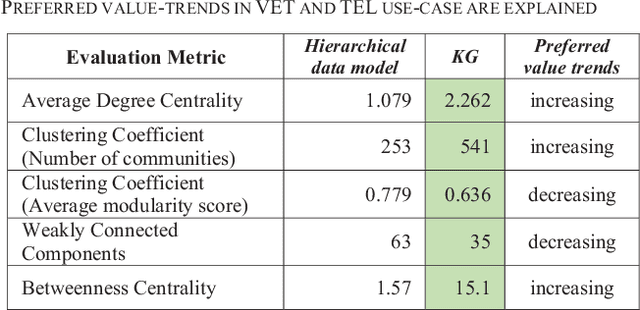
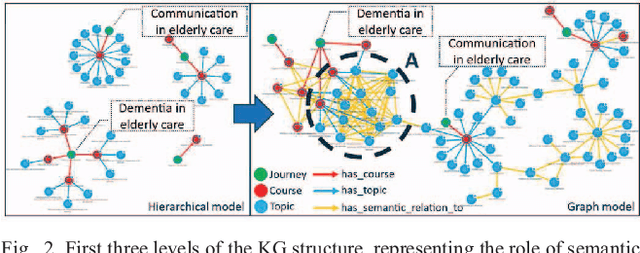


Abstract:Modelling learning objects (LO) within their context enables the learner to advance from a basic, remembering-level, learning objective to a higher-order one, i.e., a level with an application- and analysis objective. While hierarchical data models are commonly used in digital learning platforms, using graph-based models enables representing the context of LOs in those platforms. This leads to a foundation for personalized recommendations of learning paths. In this paper, the transformation of hierarchical data models into knowledge graph (KG) models of LOs using text mining is introduced and evaluated. We utilize custom text mining pipelines to mine semantic relations between elements of an expert-curated hierarchical model. We evaluate the KG structure and relation extraction using graph quality-control metrics and the comparison of algorithmic semantic-similarities to expert-defined ones. The results show that the relations in the KG are semantically comparable to those defined by domain experts, and that the proposed KG improves representing and linking the contexts of LOs through increasing graph communities and betweenness centrality.
Competence Assessment as an Expert System for Human Resource Management: A Mathematical Approach
Jan 16, 2020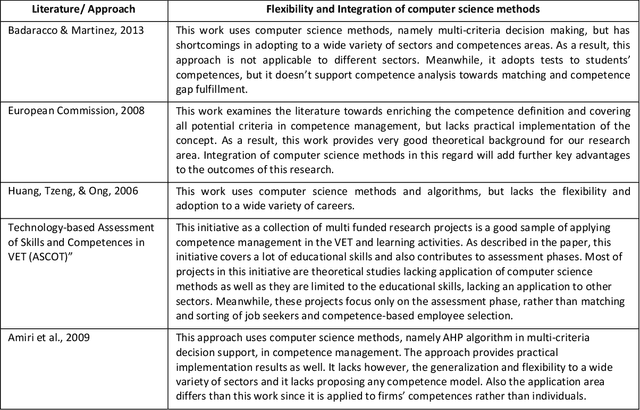
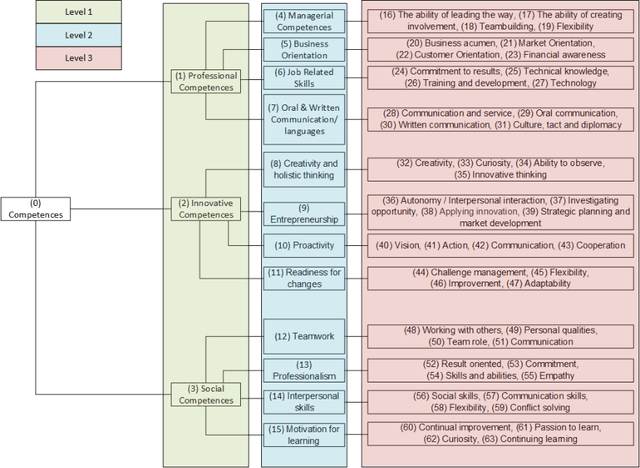
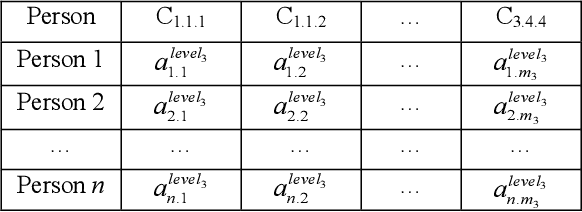
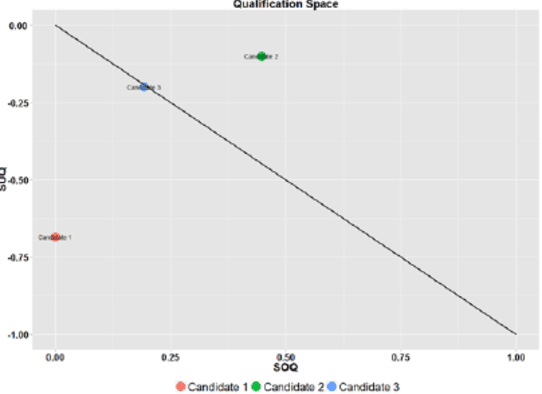
Abstract:Efficient human resource management needs accurate assessment and representation of available competences as well as effective mapping of required competences for specific jobs and positions. In this regard, appropriate definition and identification of competence gaps express differences between acquired and required competences. Using a detailed quantification scheme together with a mathematical approach is a way to support accurate competence analytics, which can be applied in a wide variety of sectors and fields. This article describes the combined use of software technologies and mathematical and statistical methods for assessing and analyzing competences in human resource information systems. Based on a standard competence model, which is called a Professional, Innovative and Social competence tree, the proposed framework offers flexible tools to experts in real enterprise environments, either for evaluation of employees towards an optimal job assignment and vocational training or for recruitment processes. The system has been tested with real human resource data sets in the frame of the European project called ComProFITS.
Knowledge Discovery from Social Media using Big Data provided Sentiment Analysis (SoMABiT)
Jan 16, 2020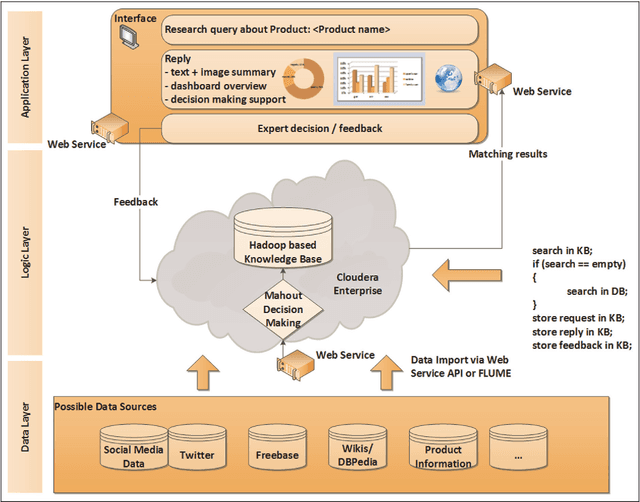
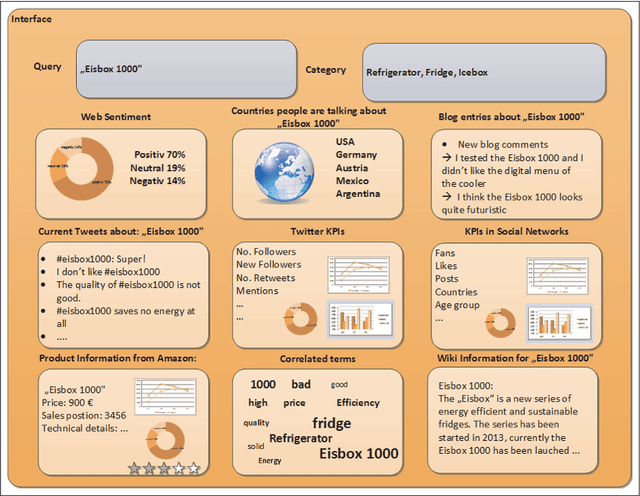
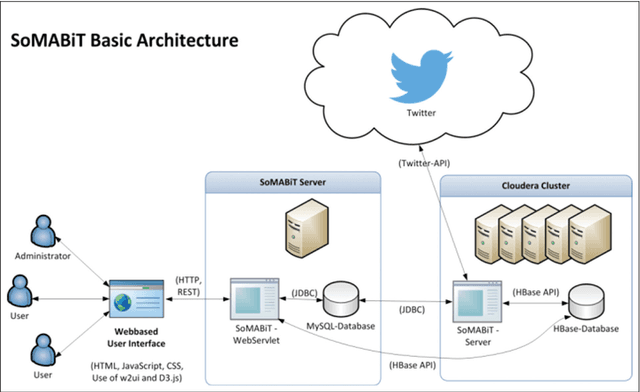
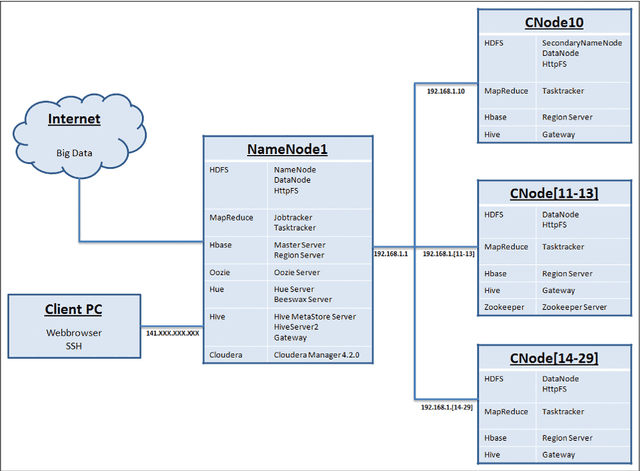
Abstract:In todays competitive business world, being aware of customer needs and market-oriented production is a key success factor for industries. To this aim, the use of efficient analytic algorithms ensures a better understanding of customer feedback and improves the next generation of products. Accordingly, the dramatic increase in using social media in daily life provides beneficial sources for market analytics. But how traditional analytic algorithms and methods can scale up for such disparate and multi-structured data sources is the main challenge in this regard. This paper presents and discusses the technological and scientific focus of the SoMABiT as a social media analysis platform using big data technology. Sentiment analysis has been employed in order to discover knowledge from social media. The use of MapReduce and developing a distributed algorithm towards an integrated platform that can scale for any data volume and provide a social media-driven knowledge is the main novelty of the proposed concept in comparison to the state-of-the-art technologies.
Knowledge Integration of Collaborative Product Design Using Cloud Computing Infrastructure
Jan 16, 2020



Abstract:The pivotal key to the success of manufacturing enterprises is a sustainable and innovative product design and development. In collaborative design, stakeholders are heterogeneously distributed chain-like. Due to the growing volume of data and knowledge, effective management of the knowledge acquired in the product design and development is one of the key challenges facing most manufacturing enterprises. Opportunities for improving efficiency and performance of IT-based product design applications through centralization of resources such as knowledge and computation have increased in the last few years with the maturation of technologies such as SOA, virtualization, grid computing, and/or cloud computing. The main focus of this paper is the concept of ongoing research in providing the knowledge integration service for collaborative product design and development using cloud computing infrastructure. Potentials of the cloud computing to support the Knowledge integration functionalities as a Service by providing functionalities such as knowledge mapping, merging, searching, and transferring in product design procedure are described in this paper. Proposed knowledge integration services support users by giving real-time access to knowledge resources. The framework has the advantage of availability, efficiency, cost reduction, less time to result, and scalability.
Practical Approach of Knowledge Management in Medical Science
Jan 16, 2020
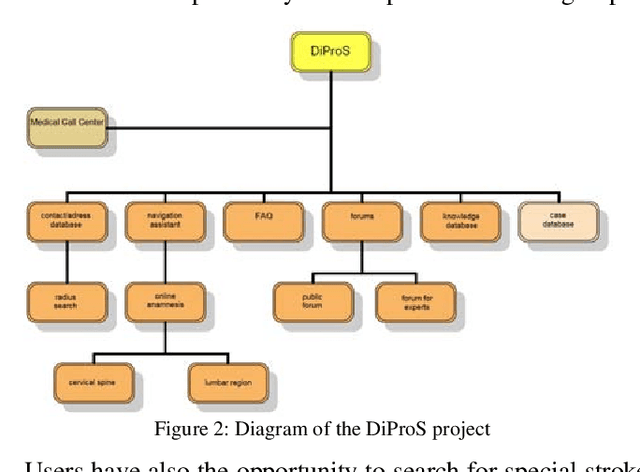
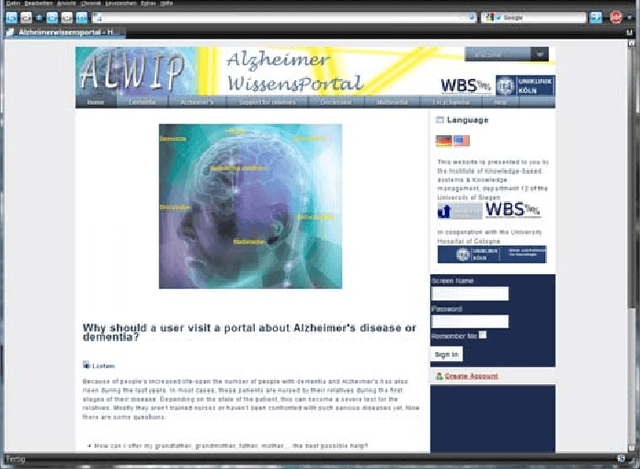
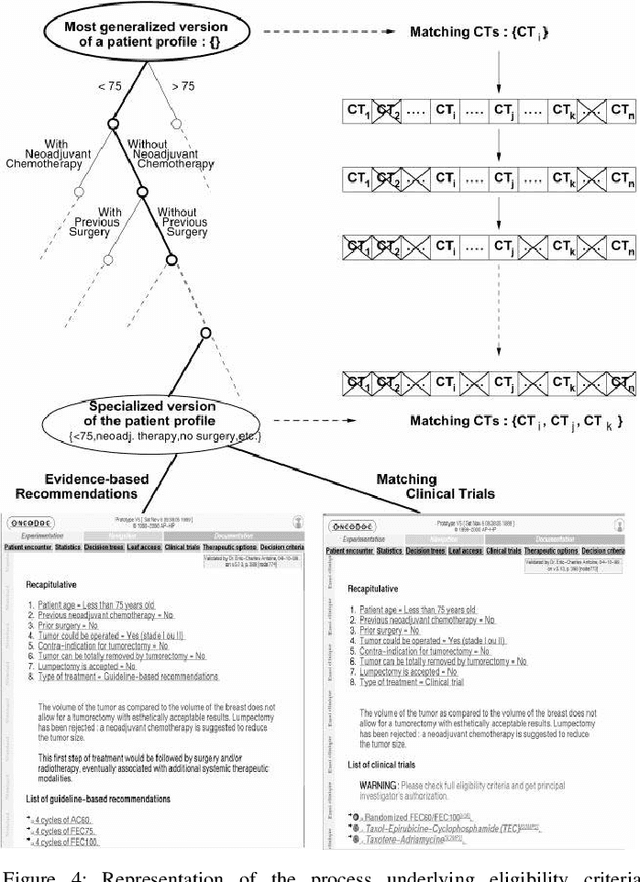
Abstract:Knowledge organization, infrastructure, and knowledge-based activities are all subjects that help in the creation of business strategies for the new enterprise. In this paper, the first basics of knowledge-based systems are studied. Practical issues and challenges of Knowledge Management (KM) implementations are then illustrated. Finally, a comparison of different knowledge-based projects is presented along with abstracted information on their implementation, techniques, and results. Most of these projects are in the field of medical science. Based on our study and evaluation of different KM projects, we conclude that KM is being used in every science, industry, and business. But its importance in medical science and assisted living projects are highlighted nowadays with the most of research institutes. Most medical centers are interested in using knowledge-based services like portals and learning techniques of knowledge for their future innovations and supports.
 Add to Chrome
Add to Chrome Add to Firefox
Add to Firefox Add to Edge
Add to Edge